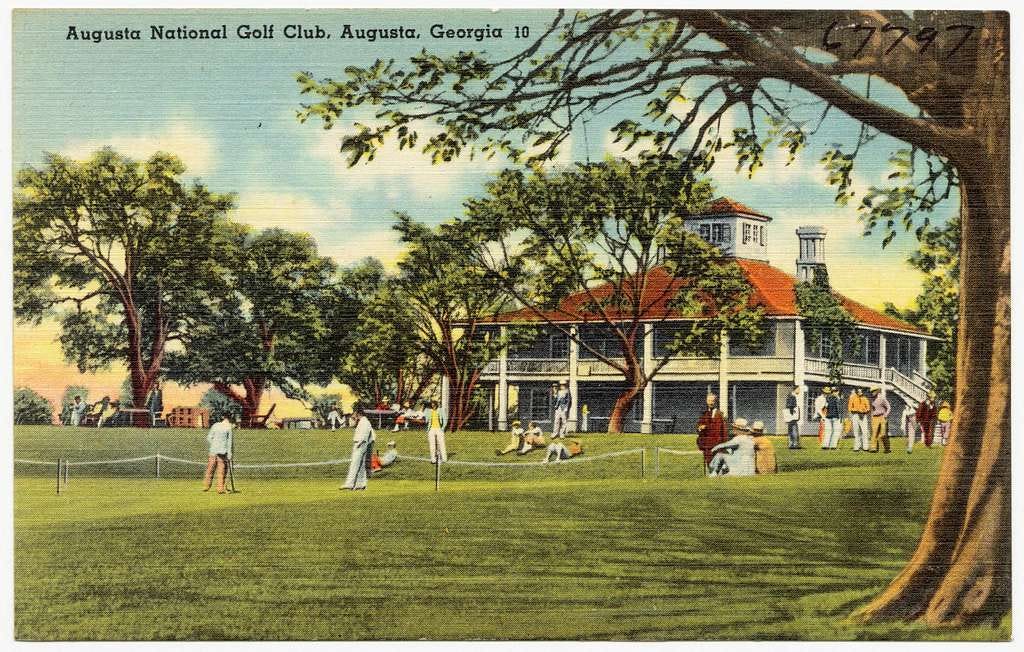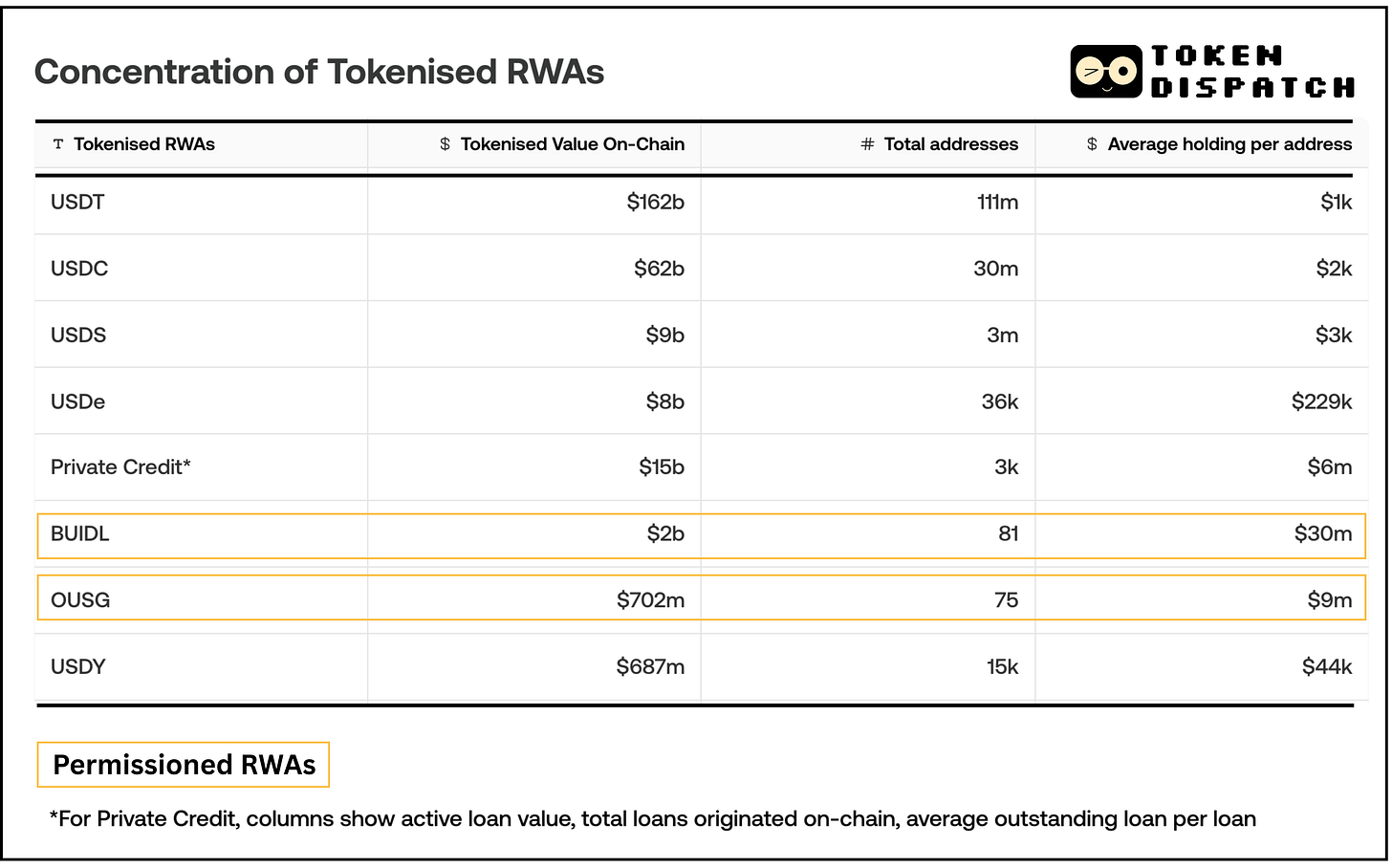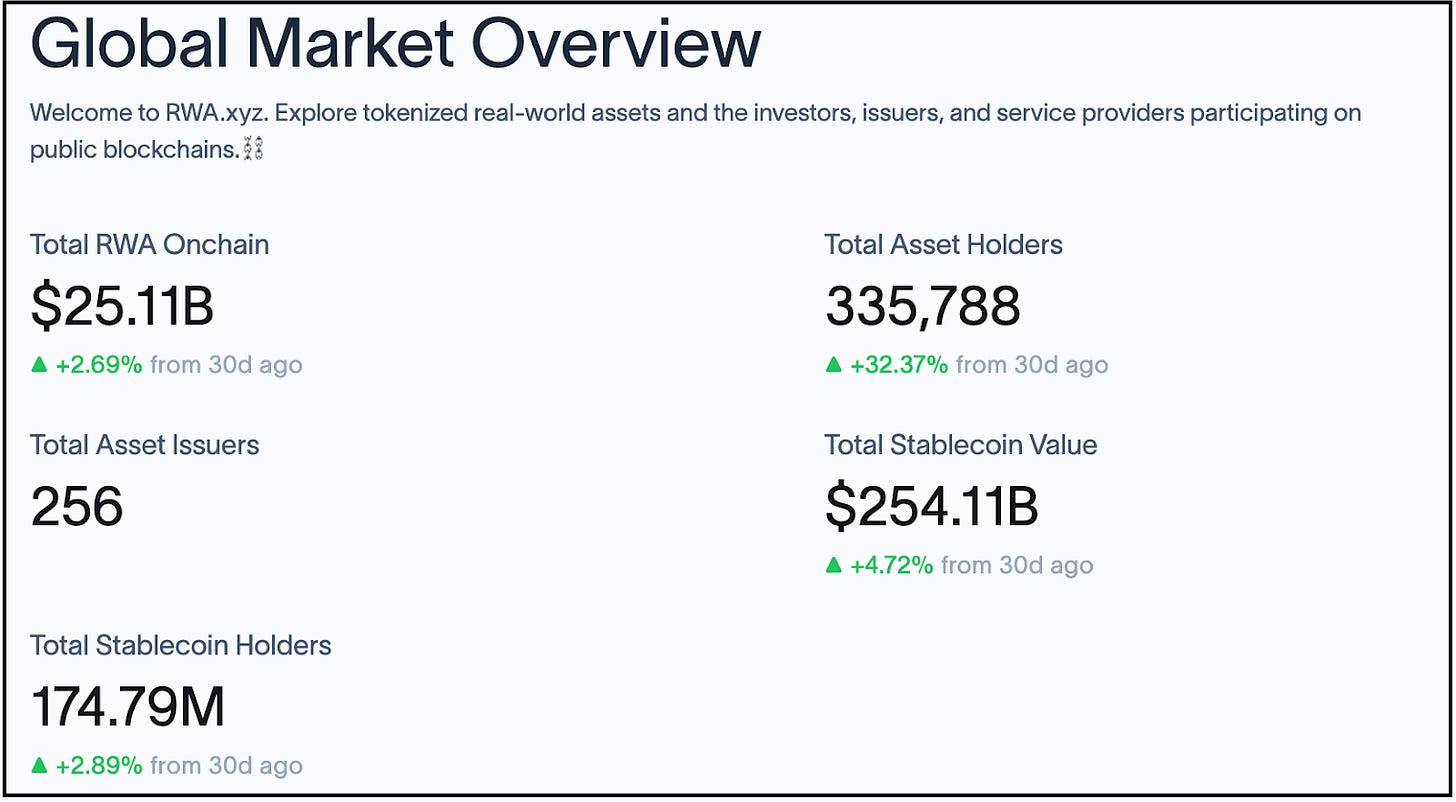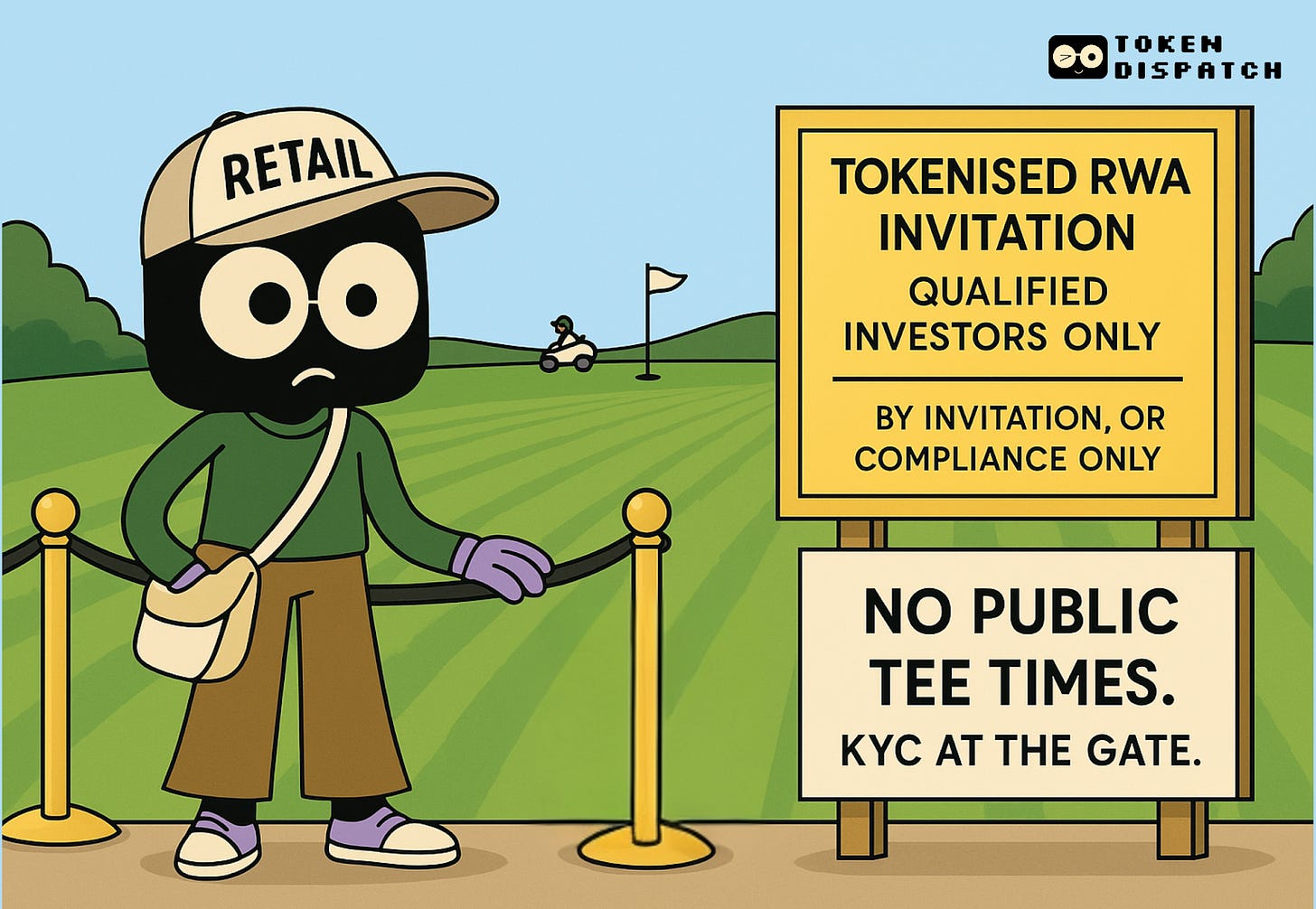In the 20th century, Augusta National Golf Club faced considerable criticism for its perceived elitism. The home of the Masters Tournament had exactly 300 members and an initiation process so exclusive that prospective members weren't even allowed to apply directly. Membership was invite-only. The only other way was for someone to nominate you, and then you would wait.
Critics called it the ultimate Boys' Club, which, to be fair, it was until 2012. What was even worse was that for decades, the club barred membership to African Americans. Sportswriters questioned why the most prestigious tournament in golf took place at a venue that excluded 99.9% of humanity. The optics were terrible: a handful of wealthy white men controlling access to something millions wanted to experience.
The club took pride in having some notable members, including four-time Masters Champion Arnold Palmer, business tycoons Warren Buffett and Bill Gates, not to mention Dwight D. Eisenhower, the thirty-fourth President of the United States.
Clearly, it wasn’t the most democratic way to run a club.
Why Just Stake, When You Can Stake And Spend?
ETH staking doesn’t have to lock you out of DeFi.
With Kelp, you can restake ETH — earning both validator rewards and staking yields — while still spending or earning on that position using rsETH.
Staking + liquidity = ✅
Access to 40+ DeFi protocols
Built on EigenLayer and fully non-custodial
Multiply your ETH utility, don’t just stake.
But then, why would Augusta National aspire to democratise access to a world-class golf course? You seldom build a premium brand when you grant open access to it. The club was aiming for excellence. With only 300 members and almost no outside play, the course remained in pristine condition year-round. Every detail could be managed precisely.
For instance, it could afford the obsessive maintenance that made the Augusta National brand legendary. Think of hand-cutting fairways with scissors, painting pine straw, and moving entire tree groves to perfect television angles. Fewer stakeholders meant greater precision. When access is controlled, quality can be perfected.
This same logic explains one of the most misunderstood trends in crypto today: why Real World Asset (RWA) tokens — digital representations of everything from Treasury bills to real estate — are overwhelmingly held by a tiny number of wallets.
Except that here the exclusivity isn’t based on gender or race.
BlackRock's tokenised money-market fund BUIDL (BlackRock USD Institutional Digital Liquidity Fund) is a ~$2.4 billion asset, but had only 81 holders as of July 31, 2025.
Similarly, Ondo Finance's US Treasury fund OUSG (Ondo Short-Term US Gov Bond Fund) shows just 75 holders on-chain. Meanwhile, major stablecoins like USDT/USDC are held by millions of addresses (~175 million total stablecoin holders across networks).
At first glance, the digitised-dollar holdings appear like everything blockchain was supposed to fix: concentration, gatekeeping, exclusion. So if you can copy and paste a wallet address, why can't you buy these yield-bearing tokens like you'd buy any other crypto asset?
The answer lies in the same operational logic that makes Augusta National maintain its exclusivity. These tokens are concentrated by design.
The Regulated Reality
The history of financial exclusion is usually a story about keeping people out to preserve privilege. But in cases like these, exclusion serves a different purpose: keeping a system compliant, efficient, and sustainable.
Most RWA tokens represent securities or funds and cannot be freely offered to the general public without registration. Instead, issuers use private or limited offerings regulated by the US Securities and Exchange Commission (SEC), such as Regulation D for US private placements or Reg S for offshore sales, which restrict tokens to accredited or otherwise qualified investors.
BUIDL (BlackRock), offered via Securitize, is open only to US Qualified Purchasers (a subset of accredited investors with a minimum of a ~$5 million investment).
Similarly, Ondo's OUSG, the tokenised Treasury bill fund, requires that investors be both an accredited investor and a Qualified Purchaser.
These are not arbitrary barriers, though. They are requirements validated by the SEC, under Regulation D 506 (c), that determine who can legally own certain types of financial instruments.
The contrast is clearer when one looks at tokens designed for different regulatory frameworks. Ondo's USDY was structured for non-US investors only (sold under Reg S abroad). By avoiding US restrictions, it reached a broader distribution, allowing anyone outside the US who completed KYC to buy USDY. It resulted in 15,000 holders, small yet dwarfing OUSG's holder count (75).
Same company, same tokenised asset, only with a different regulatory framework. The result is a 200x difference in distribution.
Here's where the Augusta National comparison becomes precise. To achieve the above, RWA token platforms bake compliance into the code of the tokens or the surrounding infrastructure. Unlike freely tradeable ERC-20s, these tokens often have transfer restrictions at the smart-contract level.
Most security tokens use a whitelist/ blacklist model (via standards like ERC-1404 or ERC-3643) so that only pre-approved wallet addresses can receive or send the token. If an address isn't on the issuer's whitelist, the token's smart contract will block any transfer to that address.
Think of it as a guest list enforced by code. You can't just show up at the gate with a wallet address and demand entry. Someone has to verify your credentials, check your accreditation status, and add you to the approved list. Only then does the smart contract allow you to receive tokens.
Backed Finance's tokens exist in two forms — an unrestricted version and a wrapped "compliance" token. The wrapped token "only allows whitelisted addresses to interact with the token", with Backed automatically adding users to the whitelist once they pass KYC.
The Efficiency Argument
From the outside, this system looks exclusionary. From the inside, it looks efficient. How so? From the issuers' perspective, a concentrated holder base is often a rational and even intentional choice given their business models and constraints.
Every additional token holder is a potential compliance liability and an added cost, both off- and on-chain. Despite these upfront compliance costs, on-chain rails bring long-term operational efficiencies, especially by way of automated NAV updates, instant settlements versus T+2 in traditional markets and programmability, i.e. automated interest distribution.
By implementing tokenisation and deploying distributed ledger technology (DLT), asset managers could achieve savings of 23% in operating costs, equivalent to 0.13% of AUM, global funds network Calastone wrote in its whitepaper.
It predicted that tokenisation could help an average fund improve its P&L by $3.1 million to $7.9 million, including increased revenue between $1.4 million and $4.2 million per fund, based on more competitive Total Expense Ratios (TER).
Industry-wide, asset management could achieve aggregate savings of $135.3bn across UCITS, UK and US (40 Act) funds.
Limiting distribution to known and vetted parties, can make it easier for issuers to ensure every holder meets requirements (accredited status, jurisdiction checks, etc.) and reduce the risk of tokens inadvertently falling into the wrong hands.
The math also adds up. By targeting a few big fish instead of a sea of minnows, issuers save on onboarding costs, investor relations, and ongoing compliance monitoring. It makes business sense for a $500 million fund to reach that capacity via five investors putting in $100 million each, rather than 50,000 investors at $10,000 each. The former scenario is also far simpler to administer. While transfers settle automatically on-chain, the compliance layer involving KYC, accreditation and whitelisting is still off-chain and scales linearly with investor count.
Many RWA token projects explicitly market to institutional or corporate investors rather than retail. Their value proposition often revolves around providing crypto-native access to yield for treasury managers, fintech platforms, or crypto funds with large cash balances.
When Franklin Templeton launched its tokenised money market fund, they didn’t want to replace your bank’s checking account. They were looking to give Fortune 500 treasurers a way to earn yield on their idle corporate cash reserves.
The Stablecoin Exception
Meanwhile, the comparison to stablecoins isn't quite fair, because stablecoins solved the regulatory puzzle differently. USDC and USDT aren't securities themselves and are designed to be digital representations of dollars, not investment contracts. This classification, earned through careful legal structuring and regulatory engagement, allows them to circulate freely without investor restrictions.
But even stablecoins required massive infrastructure investments and regulatory clarity to achieve their current distribution. Circle spent years building compliance systems, working with regulators, and establishing banking relationships. The "permissionless" experience users enjoy today sits on top of a highly permissioned foundation.
RWA tokens face a different challenge: they represent actual securities with actual investment returns, which means they fall under securities law. Until there's a clearer regulatory framework for tokenised securities (something the recently passed GENIUS Act begins to address), issuers have to work within existing restrictions.
What This Means Going Forward
The current concentration in RWA tokens is, after all, the closest manifestation of how traditional finance actually works. Consider a traditional private fund or a bond issuance restricted to qualified institutional buyers, where participation is often limited to only a handful of investors.
The difference is transparency. In traditional finance, you don't know how many investors hold a particular fund or bond — that information stays private. Only large holders are required to make regulatory disclosures. On-chain, every wallet address is visible, so the concentration becomes obvious.
Also, exclusivity isn't a feature attributed to the asset being tokenised on chain. That was always the case. Where tokenisation of RWAs adds value is in making these funds easier to manage for the issuers.
Figure's Digital Asset Registration Technology (DART) cuts loan due diligence costs from $500 to $15 per loan, while slashing settlement times from weeks to days. Goldman Sachs and Jefferies can now buy loan pools with the same ease as trading tokens. Meanwhile, tokenised Treasuries like BUIDL suddenly become programmable, and you can use the same boring government bonds as collateral to trade Bitcoin derivatives on Deribit.
Eventually, the noble deed of democratising access can be taken care of by regulatory frameworks. The exclusivity is a temporary regulatory friction. The programmability is a permanent infrastructure upgrade that’s making the same traditional assets much more flexible and tradable.
Read: Everything is a market
Back at Augusta National, their controlled membership model enables golf tournaments that have become synonymous with perfection. The limited membership means every detail can be managed precisely. Exclusivity creates the conditions for excellence, and, paradoxically, makes it more cost-effective. Achieving that same level of precision and hospitality for a broader, more inclusive audience would be exponentially more expensive.
The controlled holder base also creates ease in ensuring compliance, efficiency, and sustainability for the fund issuer.
But the walls are gradually coming down on-chain. As regulatory frameworks evolve, as wrapper products emerge, and as the infrastructure matures, more people will gain access to these yields. In some cases, that access will likely come through intermediaries and products designed for broader distribution (like Backed Finance’s unrestricted version), not through direct ownership of the underlying tokens.
The story is still in its early chapters, but understanding why things look the way they do today is key to appreciating the transformation that may be on the horizon.
That’s it for this week’s deep dive. See you next week.
Until then … stay curious,
Prathik
Token Dispatch is a daily crypto newsletter handpicked and crafted with love by human bots. If you want to reach out to 200,000+ subscriber community of the Token Dispatch, you can explore the partnership opportunities with us 🙌
📩 Fill out this form to submit your details and book a meeting with us directly.
Disclaimer: This newsletter contains analysis and opinions of the author. Content is for informational purposes only, not financial advice. Trading crypto involves substantial risk - your capital is at risk. Do your own research.









